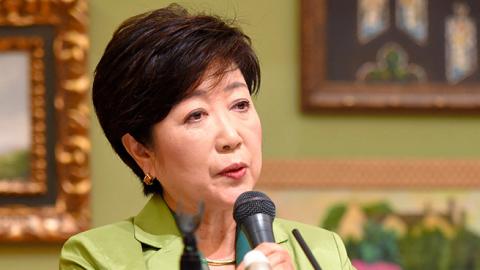Japan, the most underrated of the world’s great powers, is also usually the calmest. The Liberal Democratic Party has dominated Japanese politics since it was founded in 1955. Today the party, along with its Komeito coalition allies, controls a two-thirds majority in both houses of Parliament.
But Japan is looking more volatile than usual. It began last week, when Prime Minister Shinzo Abe called a snap election for Oct. 22, hoping to capitalize on his recovering popularity and the opposition’s disarray. But Mr. Abe’s plans were upset almost immediately when Yuriko Koike, the charismatic governor of Tokyo, announced her new “Party of Hope” would field a national slate of candidates. Only three months ago, Ms. Koike’s regional “Tokyoites First” party and its allies came out of nowhere to sweep local elections, falling just short of a two-thirds majority in the 127-seat Tokyo chamber.
The drama grew late last week when the Democratic Party, the largest opposition group in the national Parliament, issued a stunning announcement: The party’s caucus in the lower house would dissolve, allowing its parliamentarians to run under Ms. Koike’s banner in the snap elections. Suddenly, Mr. Abe’s victory was no longer a sure thing, and commentators began comparing his decision to hold early elections to Theresa May’s fiasco in the United Kingdom.
It is too early to tell how far Ms. Koike’s influence will take her. To run for Parliament herself, she would have to resign as governor of Tokyo, a position some 72% of the public thinks she should retain. Either way she faces criticism. Yukio Edano of the Democratic Party is launching an alternative new party to attract liberals who find Ms. Koike too conservative. Early polls continue to point toward a win for Mr. Abe, though his party and its coalition partner could lose their two-thirds majority in the lower house.
That matters because a supermajority is required to achieve one of Mr. Abe’s principal goals: amending the 1948 constitution, which bans Japan from participating in war. This provision, which the U.S. pushed in the wake of World War II, acts as a brake on the country’s gradual move to rebuild its military and become what Mr. Abe defines as a “normal country.”
But in deeply conservative Japan, change is often a strategy to preserve the status quo. From one point of view, Ms. Koike is a revolutionary figure who has achieved unprecedented power and visibility for a Japanese woman and has staged a successful rebellion against her old party and her old patron. Yet on foreign policy, she aligns closely with Mr. Abe’s nationalist positions. Having served as his defense minister at an earlier stage in the current government, she has a well-earned reputation as a hard-liner. She regularly visits the controversial Yasukuni Shrine, which includes notorious war criminals among the souls of Japan’s World War II dead honored there. She also supports the movement to airbrush atrocities in Japan’s wartime history from textbooks.
Far from being the end of politics as usual, Ms. Koike’s rapid rise may solidify the basic political model that has dominated Japanese politics for decades. During most of the past 60 years, Japan has been a de facto one-party state, in which the competition between rival parties with clear political agendas has been less important than factional struggles within the ruling LDP. These factions have been tied together by powerful personalities and political bosses, and what divides them is not so much abstract political ideals as the interests of rival industrial and political lobbies.
Ms. Koike’s “rebellion” in Tokyo was quietly supported by many senior LDP power brokers. Her new “Party of Hope” looks less like a Western opposition party than a traditional faction within the LDP. The struggle between her followers and Mr. Abe’s in the coming election arguably represents the LDP’s ultimate triumph. The last significant opposition party has dissolved into one more faction that could very well be at home in the LDP.
Mr. Abe faces a tougher electoral battle this fall than he expected, but it’s a measure of his success that his strongest rival shares many of his views. As Japan confronts sharp competition with China and dangerous threats from North Korea, in an era when American security guarantees are less reassuring than they used to be, the world should expect Tokyo’s national strategy and military posture to evolve rapidly—no matter who emerges as prime minister.


















